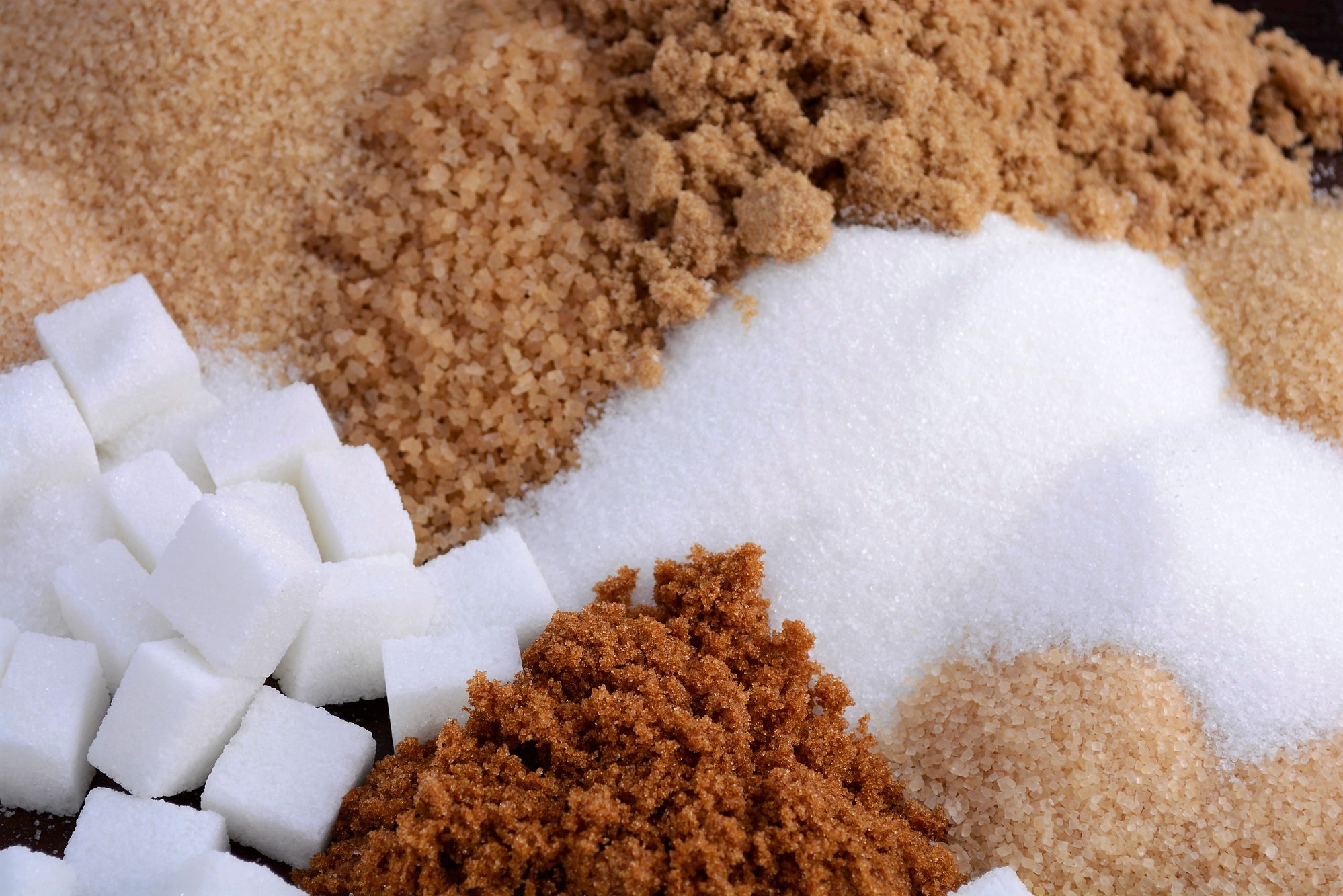- Home
- Blog
- Carbs, Sugars and Fibres
- 48 shades of hidden sugars!
48 shades of hidden sugars!
Written by
on Wednesday, 06 July 2016.
Tagged: carbohydrates, carbs, food labels, health, healthy eating, healthy lifestyle, nutrition, sugar

Sugars. These days, it’s not just white sugar you have to worry about. It’s agave, rice malt syrup, panela, high-fructose corn syrup and coconut sugar – all trendy alternative sugars that appear on ingredient lists of muesli bars, muffins, cake mixes and bliss balls.
There are more and more of them and they’re often used to disguise the total amount of sugar present and to make a food appear more healthy than it actually is. Think “Health Halo” gone beserk. Here are all the different names for these hidden sugars.
Unmasking the sneaky sugars!
We use these alternative sugars in the hope that they may be ‘healthier’ (they’re not really); or may not lead to weight gain; nor to a fatty liver. Manufacturers pick up on our sentiments and so use the alternates in their products in the hope we don’t realise they’re ALL forms of sugar. Get to know this list and you’ll be quickly able to spot the pretenders on the label.
18 derived from cane sugar
- Blackstrap molasses
- Brown sugar
- Cane juice
- Cane sugar
- Cane sugar extract
- Caster sugar
- Coffee crystals
- Demerara sugar
- Golden syrup
- Icing sugar
- Invert sugar (preferred by bakers)
- Molasses
- Panela
- Rapadura
- Raw sugar
- Treacle
- Turbinado sugar
- White sugar

6 derived from fruit
- Date sugar
- Fruit juice concentrate
- Fruit sugar
- Grape juice concentrate
- Grape sugar
- Pear juice concentrate
1 derived from beet
Beet sugar
5 derived from corn
- Corn sugar
- Gluco-malt
- Glucose syrup
- High fructose corn syrup - a sweetener used in the US
- Karo
12 alternative syrup sweeteners
- Agave
- Barley malt syrup
- Birch syrup
- Brown rice syrup
- Coconut sugar
- Date sugar
- Honey
- Invert sugar
- Malt extract
- Maple syrup
- Palm sugar
- Rice malt syrup
6 chemical names for sugars (ending in –ose)
- Glucose
- Dextrose (another name for glucose)
- Fructose (fruit sugar)
- Lactose (milk sugar)
- Maltose (malt sugar)
- Sucrose
The most commonly used sugars are:
- White sugar a.k.a. sugar,
- Barley malt syrup (for baking and brewing),
- Invert sugar (a mix of glucose and fructose preferred by pastry cooks, bakers and confectionery makers as it doesn't crystallise)
Note: this list doesn’t include the sweeteners such as stevia, sucralose, aspartame, saccharin or cyclamate. Nor the sugar alcohols that pop up in sugar-free chewing gums such as xylitol or mannitol. And erythritol which turns up in kombucha drinks.
Splitting the total sugar content
Manufacturers often use three or four different types of sugars so that it splits the total quantity of sugar and means these individual sugars are able to be listed as separate ingredients and so appear further down the list. At times, there are genuine technology needs for invert sugar or glucose (to prevent lollies cystallising) but I'm not talking about these.
Why do it?
If I made a biscuit which normally uses 50 per cent by weight of sugar (sucrose) then that may well be the largest ingredient and would have to come first on the list of ingredients with flour, butter, water, milk, spices etc., following. You would know, at a glance, that this is not healthy food.
But if I split that ordinary sugar up and use four different sugars to get the same level of sweetness, I may be able to get the sugar down to 20 per cent by weight and then it may appear 4th or 5th on the list, with the other sugars with different names coming even further down the list. If you're only looking for sugar or sucrose, then you may think that this food isn't quite so bad for you.
What does a typical list look like?
Here is a typical list of ingredients taken from a fruit and flake breakfast cereal. The ingredients are listed in descending order by weight. Note the sugar (in Position No: 4) then fructose (No: 8), dextrose (No: 11), barley malt (No: 15) and honey (No: 17) – which are all forms of ‘sugar’.
Wholegrain wheat, rolled oats, sultanas, sugar, triticale, dried apricots, wheat flour, fructose, palm oil, humectant [glycerol], dextrose, wheat fibre, food acid (citric acid), natural flavour, barley malt extract, salt, honey, mineral (iron), vitamins (niacin, riboflavin, folate, thiamin).
| Wholegrain wheat, rolled oats, sultanas, sugar, triticale, dried apricots, wheat flour, fructose, palm oil, humectant [glycerol], dextrose, wheat fibre, food acid (citric acid), natural flavour, barley malt extract, salt, honey, mineral (iron), vitamins (niacin, riboflavin, folate, thiamin) |
Label reading hint
If sugar appears in the first three ingredients, the food is high in sugar. But if it doesn’t, don’t automatically assume it’s low; look for the other forms of sugar.
The bottom line
Some of these alternative sweeteners have a little more B vitamins (like honey); some offer more minerals like potassium or magnesium or iron (like blackstrap molasses); some have a few phyto-chemicals (like cane juice extract). However, they have nowhere near what you’ll get from vegetables, fruits, herbs and whole grains; and nowhere near enough to make a huge difference to your overall intake.
All sugars are similar in terms of nutrition and kilojoules and I don't regard any of them as superior to white sugar.
They are mixtures of glucose plus fructose plus sucrose but with very little in the way of nutrition. Think of these as 'enhancers' of fruit, yoghurt, milk or whole grains rather than foods in their own right.
I’ve reviewed quite a few of these already - see my Post on Rice Malt Syrup and my post on Agave or Coconut Sugar or High Fructose Corn Syrup. Or how the syrups stack up against white sugar.
Be smart. Know the other names to spot the hidden sources of sugar in foods.
You may also be interested in...
Jemma O'Hanlon
The Good Stuff
The Boring Stuff
© 2025 Foodwatch Australia. All rights reserved
Website by Joomstore eCommerce









